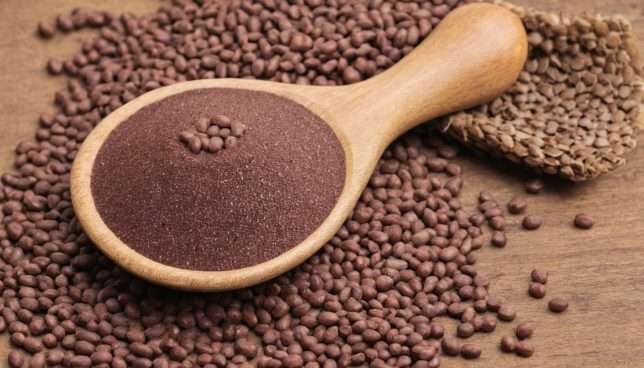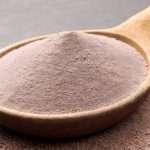Curious about a nutrient-packed superfood that can transform your health journey? Look no further than ragi! This humble grain, also known as finger millet, packs a powerful nutritional punch. While being gluten-free, it’s bursting with essential vitamins, minerals, and fiber to boost your overall well-being.
Contrary to popular belief that healthy eating is bland and boring, ragi introduces a delightful contrast with its versatility in recipes – from crispy dosas to hearty porridges. Get ready to explore the myriad benefits of including ragi in your diet and discover how this underrated superfood can revolutionize your health goals.
Understanding Ragi
Origin
Ragi, also known as finger millet, traces its roots back to Africa and has a rich history spanning thousands of years. This resilient crop has spread globally and is now cultivated in various countries. Ancient civilizations like the Harappan civilization valued ragi for its versatility and nutritional benefits.
Ragi’s ability to thrive in diverse climates and soil conditions makes it a popular choice among farmers. Requiring less water than other cereal crops, ragi is well-suited for cultivation in arid regions. Whether grown with rainfall or irrigation, this hardy crop continues to be a staple food source for many communities worldwide.
Cultivation
The different varieties of ragi – white, red, and black – offer distinct nutritional profiles and flavors. Choosing between these varieties often depends on personal preferences or specific culinary requirements. Each type brings its own set of benefits to the table while retaining the core nutrients that make ragi a valuable addition to diets.
Consider factors such as taste preferences and intended use cases. For instance, white ragi might be preferred for certain recipes due to its milder flavor profile compared to the nuttier taste of red or black varieties. Experimenting with different types can help you discover which variety aligns most closely with your palate.
Nutritional Profile
Macronutrients
Ragi is a powerhouse of nutritional value. It offers a substantial amount of carbohydrates, which can provide lasting energy throughout the day. Its moderate protein content makes it an excellent plant-based protein source for individuals looking to boost their protein intake without relying on animal products. Moreover, ragi is low in fat, making it an ideal choice for those aiming to manage their fat consumption effectively.
When considering the nutritional profile of ragi, it’s essential to acknowledge its rich vitamin content. Ragi serves as a notable source of various vitamins such as thiamine (B1), riboflavin (B2), and niacin (B3). These vitamins play crucial roles in supporting overall health and well-being. Furthermore, ragi contains vitamin E, which acts as an antioxidant, helping protect the body against oxidative stress and damage caused by free radicals. It’s worth noting that the specific vitamin content in ragi may vary depending on factors like the variety of ragi used and different processing methods employed during production.
Minerals
In terms of minerals, ragi stands out due to its abundance of essential nutrients necessary for optimal bodily function. This superfood is particularly rich in vital minerals like calcium, iron, and phosphorus. The high levels of calcium found in ragi make it especially beneficial for promoting strong bones and overall bone health. Incorporating ragi into one’s diet can be a simple yet effective way to ensure adequate mineral intake while reaping the associated health benefits that these nutrients offer.
Health Benefits
Digestive Health
Ragi’s dietary fiber aids digestion and keeps bowel movements regular, preventing constipation. It contributes to a healthy gut microbiome by including ragi in your diet. The fiber content supports digestive health by maintaining regularity and promoting overall well-being.
Consuming ragi can enhance digestive health due to its high fiber content, which helps prevent constipation and promotes a balanced gut environment. This grain is an excellent choice for individuals seeking to improve their digestive system naturally.
Blood Sugar Control
With its low glycemic index, ragi releases glucose slowly into the bloodstream, making it ideal for managing blood sugar levels effectively. Including ragi in meals can help regulate blood sugar spikes, making it a suitable option for individuals with diabetes or those aiming to control their blood sugar levels.
Ragi’s ability to release glucose gradually into the bloodstream assists in managing blood sugar levels efficiently. By incorporating this grain into your diet, you can maintain stable blood sugar levels throughout the day.
Bone Strength
The substantial calcium content in ragi plays a crucial role in maintaining strong bones and supporting bone health. Particularly beneficial for children, pregnant women, and postmenopausal women, consuming ragi regularly can help prevent conditions like osteoporosis while contributing to overall bone strength.
Regular consumption of ragi supports bone strength through its rich calcium content that aids in preventing bone-related issues such as osteoporosis. This makes it an essential addition to one’s diet for ensuring optimal bone health.
Weight Management
Ragi serves as a filling grain that promotes satiety and aids weight management by controlling appetite and preventing overeating tendencies. Its fiber-rich composition contributes significantly towards supporting healthy weight loss or maintenance goals.
Including ragi in your meals helps manage weight effectively by promoting feelings of fullness due to its high fiber content that prevents excess calorie intake.
Ragi in Diets
Gluten-Free
Ragi is a nutritious grain that is gluten-free, making it an ideal choice for those with gluten intolerance or celiac disease. It can be seamlessly substituted for wheat flour in various recipes, from bread to cookies. The rise in popularity of ragi-based products among the gluten-free community showcases its versatility and nutritional value.
Including ragi in your diet not only diversifies your meals but also caters to individuals following a vegan lifestyle. Being plant-based, ragi offers essential nutrients like protein, iron, and calcium without any animal-derived ingredients. By incorporating ragi into vegan diets, individuals can ensure they meet their daily nutritional requirements while enjoying its earthy flavor and health benefits.
Traditional Uses
Across different cultures, ragi has been a staple ingredient used to create traditional dishes like porridge, flatbreads (rotis), and fermented beverages. In some regions, it is even utilized as baby food due to its rich nutrient profile that supports healthy growth and development. The incorporation of ragi in traditional recipes not only adds a distinct taste but also provides numerous health benefits ranging from improved digestion to enhanced bone strength.
Preparing Ragi
Cooking Methods
Ragi, a versatile grain, can be prepared in various ways to suit different tastes and preferences. Boiling ragi is a common method that results in a creamy texture ideal for porridge. Steaming ragi grains can help retain their nutrients and create fluffy dishes like idlis. Roasting ragi flour enhances its nutty flavor profile, perfect for making rotis or baked goods. Grinding ragi into flour opens up possibilities for creating dosas (pancakes) with crispy edges.
Experimenting with these diverse cooking methods not only adds variety to your meals but also unlocks the full potential of ragi nutrition by preserving its essential nutrients through different preparation techniques.
-
Boiling: Ideal for making porridge
-
Steaming: Retains nutrients well
-
Roasting: Enhances nutty flavor
-
Grinding: Versatile option for dosas and baked goods
Recipes
Ragi porridge stands out as a simple yet nutritious breakfast choice made by boiling ragi flour in water or milk until it thickens to the desired consistency. For those looking to explore more flavors, ragi dosa offers a crispy pancake alternative created from fermented ragi batter that pairs perfectly with chutney or sambar. If you have a sweet tooth, consider baking healthy ragi cookies using ragi flour combined with oats and natural sweeteners like honey or dates.
Trying out these recipes not only introduces creativity into your culinary endeavors but also ensures you enjoy the health benefits of incorporating ragi nutrition into your diet through delicious meals.
-
Ragi Porridge – A nutritious breakfast option
-
Ragi Dosa – Crispy pancake served with chutney/sambar
-
Ragi Cookies – Healthy treats made from natural ingredients
Side Effects
Allergies
Ragi is generally safe for consumption and does not typically cause allergies. However, some individuals may have specific sensitivities to ragi, leading to adverse reactions. If you experience any negative symptoms after consuming ragi, such as itching or swelling, it’s crucial to seek advice from a healthcare professional. While rare, allergic reactions can occur in certain cases.
-
Pros:
-
Generally well-tolerated
-
Highly nutritious
-
-
Cons:
-
Potential for allergic reactions in sensitive individuals
-
Adverse effects if intolerances exist
-
Incorporating ragi into your diet can be beneficial due to its high nutritional value; however, overconsumption may pose risks. Consuming excessive amounts of ragi without a balanced diet could lead to weight gain over time. It’s essential to maintain moderation and variety in your food choices even when including nutrient-dense options like ragi.
Overconsumption Risks
Although rich in nutrients like iron and calcium, consuming too much ragi can have drawbacks. Individuals with certain medical conditions should consult their healthcare provider before significantly increasing their intake of ragi. Balancing the consumption of this grain with other food groups is important for overall health and preventing potential adverse effects.
-
Steps for Moderation:
-
Monitor portion sizes when incorporating ragi into meals.
-
Ensure a diverse diet by including various food groups alongside ragi.
-
-
Guidance on Intake:
-
Seek advice from a nutritionist or doctor regarding the appropriate amount of ragi based on individual health needs.
-
Adjust consumption based on personal dietary requirements and health goals.
-
Remember that while enjoying the benefits of incorporating ragi nutrition into your meals, being mindful of portion sizes and consulting professionals if needed will help you make the most out of this nutritious grain without facing any adverse effects.
Ragi vs Other Grains
Nutritional Comparison
Ragi nutrition is Higher calcium content sets it apart from rice, wheat, and maize. Unlike refined grains such as white rice or wheat flour, ragi boasts more dietary fiber. Comparing it to other millets reveals that ragi is a standout due to its superior protein content.
When looking at the nutritional profile of different grains, ragi emerges as a powerhouse of essential nutrients. For instance, if you’re aiming to increase your calcium intake through diet alone, opting for ragi over rice can be beneficial. Similarly, choosing ragi over refined grains like white rice can help boost your fiber consumption significantly.
Culinary Uses
Incorporating ragi into your culinary repertoire opens up a world of possibilities. Ragi flour’s versatility shines when used as a thickening agent in soups, stews, and sauces. Adding this nutritious grain to smoothies or yogurt not only enhances the flavor but also provides an extra nutritional punch.
Exploring the culinary landscape of different cultures often unveils unique uses for ingredients like ragi. In some regions where traditional beverages hold cultural significance, malted drinks made from ragi are popular choices among locals seeking both refreshment and nourishment.
Incorporating Ragi
Daily Intake Recommendations
Incorporating ragi into your diet can be a beneficial choice, but there isn’t a set daily intake recommendation. The amount of ragi you should consume varies depending on your unique needs and dietary objectives. Adding 1-2 servings of ragi each day can contribute to a well-rounded diet, offering essential nutrients like calcium and fiber. Seeking guidance from a nutritionist or dietitian is advisable to determine the ideal quantity of ragi for your specific nutritional requirements.
Including ragi in your meals offers versatility and nutrition benefits. Combining ragi with foods rich in vitamin C, such as citrus fruits or tomatoes, helps enhance the absorption of iron present in ragi. Pairing ragi with sources of protein like legumes or dairy products can elevate the overall protein content of your dishes. Exploring various food combinations not only adds excitement to your meals but also ensures that you are getting a diverse range of nutrients essential for good health.
Research and Studies
Recent Findings
Studies suggest that ragi nutrition offers potential anti-inflammatory effects, aiding in reducing inflammation in the body. Some research also points towards ragi’s ability to regulate cholesterol levels, contributing to better heart health. Ongoing studies delve into the impact of ragi consumption on prevalent health issues like obesity and diabetes.
Ragi’s nutritional properties are under continuous scrutiny by researchers who aim to unravel its various health benefits fully. Scientists are particularly interested in identifying the bioactive compounds present in ragi that contribute to its positive effects on human health. Moreover, ongoing research is geared towards uncovering how incorporating ragi into diets can potentially prevent chronic diseases.
Ongoing Research
Researchers worldwide are actively engaged in exploring the myriad health benefits associated with consuming ragi as a dietary staple. The focus remains on comprehensively understanding how these benefits translate into tangible improvements for overall well-being. Furthermore, scientists are keen on investigating the therapeutic applications of ragi beyond basic nutrition, aiming to harness its properties for disease prevention.
The scientific community is dedicated to shedding light on the lesser-known aspects of ragi nutrition, paving the way for a deeper understanding of this ancient grain’s potential contributions to human health.
Closing Thoughts
You’ve delved into the world of ragi, uncovering its nutritional powerhouse and myriad health benefits. From boosting your iron levels to aiding in weight management, ragi emerges as a versatile grain that can revolutionize your diet. As you consider incorporating ragi into your meals, remember to start slow and experiment with various recipes to find what suits your taste buds best.
With the knowledge gained from this article, you’re equipped to make informed decisions about your dietary choices. So, why not give ragi a try? Whether you sprinkle it on your yogurt or bake it into delicious cookies, the possibilities are endless. Embrace the goodness of ragi and witness the positive impact it can have on your overall well-being.
Frequently Asked Questions
Is ragi a good source of nutrition?
Yes, ragi is a highly nutritious grain packed with essential nutrients like calcium, iron, and fiber. It is a great source of energy and helps in maintaining overall health.
How can ragi benefit my health?
Ragi offers numerous health benefits such as aiding in weight loss, controlling blood sugar levels, improving digestion, and strengthening bones due to its rich nutritional content.
Can ragi be included in various diets?
Absolutely! Ragi is versatile and can be incorporated into different diets like gluten-free, vegan, or diabetic-friendly diets. It serves as an excellent alternative to refined grains for a healthier lifestyle.
Are there any side effects of consuming ragi?
While ragi is generally safe for consumption, some individuals may experience bloating or gas due to its high fiber content. It’s advisable to introduce it gradually into your diet to avoid digestive issues.
How does ragi compare to other grains nutritionally?
Compared to other grains like wheat or rice, ragi stands out for its higher calcium content and lower glycemic index. It provides more nutrients per serving making it a superior choice for overall health.



